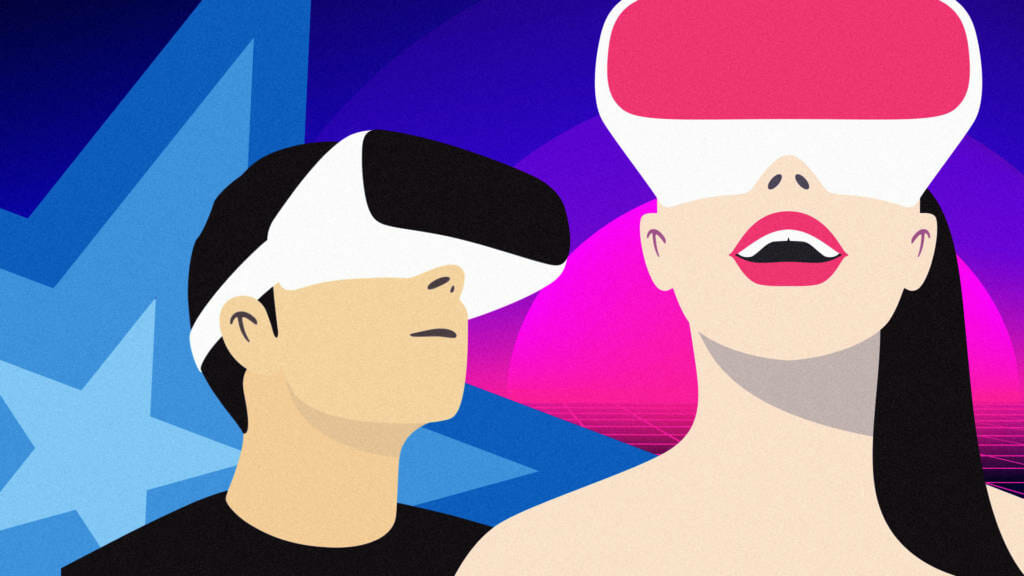While Walmart’s investment in a virtual reality startup may show more diverse industries driving virtual reality adoption, entertainment remains one of VR’s most prominent supporters—especially given how the industry marked the first seven-figure purchase of a VR series at the Sundance Film Festival in January.
While that was a major milestone, spreading awareness about VR still requires a large variety of content—preferably backed by celebrity participation. These include everything from having famous actors play “Virtual Reality Pictionary” on The Tonight Show Starring Jimmy Fallon to Elton John announcing his retirement from touring using a VR retrospective of his music career.
Sports, which has its own celebrities, is a major driver for the NextVR platform. The company recently partnered with the WWE to broadcast highlights from 2018 events in virtual reality.
Danny Keens, VP of Content at NextVR, pointed to ex-NFL player Reggie Bush as a prime example of a VR influencer. He said that the former pro football player, who also happens to be an avid video game player, was a natural fit for presenting the NFL in VR as a co-commentator who discusses highlights from select games.
“The VR space is new and exciting, and like most new ventures people want to get in early to be part of the movement,” Keens said. “A key factor with talent and celebs in the VR space is having a passion for technology.”
“The opportunity to transport fans from anywhere in the world to see their favorite sports team or band live is transformational,” Keens added. “We’re able to have fans feel as if they are at the live venue experiencing the event through our technology.”
But sports events aren’t the only ways to grow an audience for VR. Baobab Studios, an animation studio co-founded by former Dreamworks Animation director and writer Eric Darnell, specializes in creating animated VR shorts such as Invasion!, which won a Daytime Emmy last year. The company has attracted a long list of celebrities interested in helping to pioneer the medium, starting with Ethan Hawke, who is featured as a narrator for Invasion! More recently, the studio brought on musician John Legend as a voice and producer for its VR series Rainbow Crow.
Baobab CEO Maureen Fan explained that VR allows audiences to emotionally connect with characters in ways they couldn’t before, and that’s attracting celebrities to become involved.
“Celebrities are creatives, and of course they want to create experiences that connect with audiences more deeply,” said Fan.
Although the NextVR platform includes standalone programming such as short VR films, it puts special emphasis on live event broadcasts, which Keens said helps drive fans to adopt VR. Content includes concerts, sports, esports and other events as The Game Awards. Specifically, Keen said the NFL and NBC’s World of Dance are examples of strong VR programming, with the latter being a weekly series that complements the television show featuring Jennifer Lopez, Ne-Yo, Derek Hough and Jenna Dewan Tatum as judges.
But even though sports and other live events are major drivers, catering to all different tastes, Fan added that statistics show that VR narratives make up about half the time people spend in virtual reality headsets, indicating exceptional interest in original stories.
“VR is like the mobile phone or a TV,” Fan explained. “It’s a platform to deliver content.”
Underscoring the point is how Invasion! is currently being adapted into a full-length 2D movie experience in partnership with Roth Kirschenbaum Films, a movie studio founded by Hollywood veterans Joe Roth and Jeffrey Kirschenbaum. Additionally, Fan said that other forms of virtual reality such as social VR, location-based experiences (LBE) and immersive theater are all gaining traction.
“I’d imagine that sports would work especially well for social VR,” she said. “In order for an LBE experience to draw audiences, it better be ‘wow’ enough to get you off your couch. Right now, that means integrating the physical world with the virtual world in the LBE spaces.”
Ultimately, what works best to attract audiences is still being worked out.
“VR is still a young medium and networks, brands and VR companies are experimenting with programming,” Keens said.

